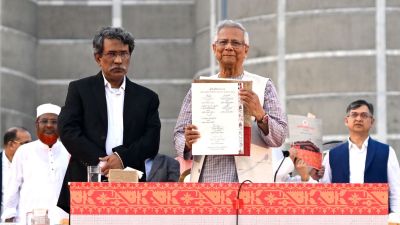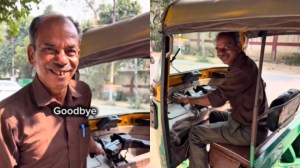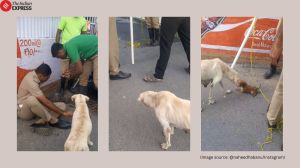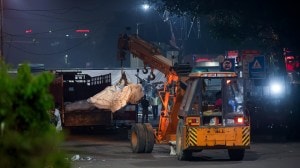‘I get at least 1 letter every month from a Hindi reader’
Open any anthology of South Asian fiction or Indian women’s writing and it’s likely to feature Tamil journalist-author Vaasanthi. ...

Open any anthology of South Asian fiction or Indian women’s writing and it’s likely to feature Tamil journalist-author Vaasanthi. The editor of a Tamil newsmagazine for nine years, Vaasanthi retired recently. Her writing, however, finds a new lease of life in Hindi in a just-released Bharatiya Jnanpith edition. In New Delhi to celebrate this avatar at the Sahitya Akademi, the fiery feminist spoke to Renuka Narayanan.
You’re a prickly pear, constantly critiquing your world. How come?
I was born in Bangalore into a stiflingly traditional Iyer family. There were a million rules and regulations. Ours was a huge joint family. I saw many things happen tI thought were wrong. But whenever I asked questions, I was told to keep my mouth shut. Good girls were not expected to ask questions in a patriarchal household.
I guess your generation got the full blast of the 19th century’s notions. Would you share a gory story or two, to explain what it was really like?
That sort of thing still goes on in so many places! I’ll tell you a small thing, which makes me so angry even today, because of the open discrimination between boys and girls. All the girls in our family excelled in study (unlike the boys). Plus, we learnt so many accomplishments, like singing and dancing, in which we were expected to attain a high level of proficiency. You know how meals would be served on the floor those days? After eating, the boys would just get up and swagger off like lords of creation. We poor girls would have to clean up, even if we had to study for a test the next morning.
My worst memory is of a shaven widow in our ancestral village. She always wore a coarse sari and ate leftovers, but was the personification of love. One festival day, she took the silk of my pavadai (skirt) between two fingers and wonderingly remarked on its softness. I discovered that she had been married at five to a boy of nine. The next year, while she was playing hopscotch, she was dragged in, tonsured and stripped of colours, flowers, bangles and bindi. She had to sleep in a corner and be a servant. Her ‘husband’ had drowned in the Kaveri. When she came of age, the restrictions increased to inhuman proportions. How was she brainwashed into smiling and accepting her fate? Such injustice haunts me.
How did an Iyer mami manage to write on Mizoram?
I spent two years in Aizawl, where my husband was posted as Principal Engineer to the CPWD in the 70s. It was a lovely place, but there were cultural clashes. The Mizos disliked and distrusted plains people because of the behaviour of Jats and Sikhs in the CRPF and Army. They could not comprehend Mizo culture, dismissed them as ‘‘mere’’ tribals, pounced on their women. There was an incident in which a little boy and girl were run over by a CRPF truck driver. I tried to contrast this famine of the heart, caused wantonly by men, with the famine caused by Nature, which cannot be helped. In Mizoram, when the bamboo flowers every 12 years, the rats eat the blossoms and go on a rampage, destroying all the crops, which always leads to famine.
So that’s Baans ke Phool which the Bharatiya Jnanpith has just brought out as a collection of your stories in Hindi. What’s the genesis?
Baans ke Phool has my Mizo novella Moongil Poo (Bamboo Flowers) which I wrote in Tamil 15 years ago, plus several short stories from back then. They were all translated into Hindi almost at once, by one Sujata Iyer of Kanpur—she like my work very much. These stories appeared in Hindi literary journals like Kadambini, while Baans ke Phool was serialised in Saptahik Hindustan, because Mrinal Pande liked it. Hindi writers like Namwar Singh tell me that unlike most bhasha-to-bhasha translations, Sujata’s version was of very good quality.
The novella became a state award-winning film in the 80s in Malayalam (directed by Padmarajan. Suhasini Mani Ratnam played the lead and got the Best Actress award). Jnanpith meanwhile, kept my Hindi stories for a decade: I guess they’re clearing their backlog. I’m thrilled it’s in Hindi: every month I get at least one letter from a Hindi reader in some remote corner of India!



- 01
- 02
- 03
- 04
- 05




























